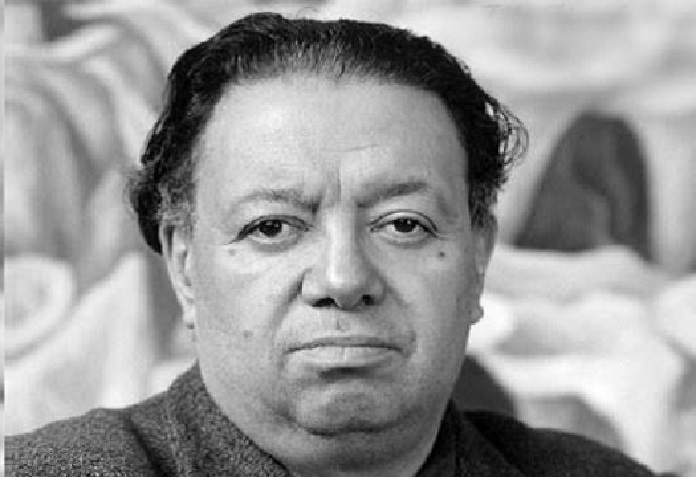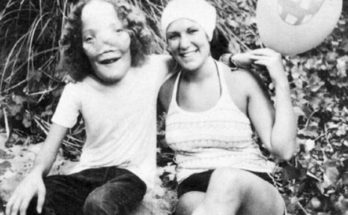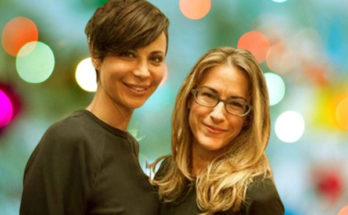Quick Facts
| Net Worth | Not Known |
| Salary | Not Known |
| Height | Not Known |
| Date of Birth | Not Known |
| Profession | Celebrities |
Diego Rivera is a Mexican muralist and painter who is not only considered as one of the leading artists of the 20th century but also one of the founding fathers of the Mexican mural movement. It’s been many years since he breathed his last but Rivera is still being talked about today for many reasons. Here is all you need to know about the life and times of one of the greatest artists from the 20th century.
Diego Rivera’s Early Life And Influences
Diego María Rivera was born in Guanajuato, Mexico on the 8th of December, 1886 to María del Pilar Barrientos and Diego Rivera Acosta. He was one half of a twin; but when they clocked 2 years old, his twin, Carlos, died. A year after the death of Carlos, Diego took to painting on the walls which his parents noticed. To encourage his artistry, they put up canvases and chalkboards on the walls of their house.
When he was 10, Rivera was enrolled at the San Carlos Academy of Fine Arts, Mexico City. Rivera would later travel to Europe to further his studies in art under the sponsorship of the then Governor of Veracruz, Teodoro A. Dehesa Méndez. In Europe, Rivera’s first stop was Madrid, Spain, where he studied under Eduardo Chicharro. He later moved over to Paris, France, where he lived and worked with great artists such as Ilya Ehrenburg, Amedeo Modigliani and his wife, Jeanne Hébuterne.
This was not the only form of artistic education that Diego Rivera had in the course of his career. One of his earliest influences was José Posada who is widely remembered for his relief paintings and illustrations. Also, on the urging of the Mexican ambassador to France, Diego decided to go to Italy where he discovered the Renaissance frescoes and fell in love with the artistic style this trip defined a majority of the art Rivera produced.
Details About His Art And The Influence They Have On Art Today
Upon his return to Mexico in 1921, Rivera kicked off his career as a muralist, and with funding from the government, he painted several murals on public buildings. The murals featured stories about the country’s history and people. But as he grew as an artist his work took on a political tone.
Mexico is not the only country where he made murals. As previously mentioned, major cities around the world were graced by his presence and beautified by his murals. Some of these cities and his paintings in them include:
San Francisco
- ‘Making a Fresco’ at the San Francisco Art Institute. The painting depicts the construction of San Francisco by San Francisco. Rivera completed the painting in 1931.
- ‘Allegory of California’ at the Pacific Stock Exchange. Rivera showcased Califa (the sacred spirit of California) in this work and it can be found inside the stock trading building. The painting was completed in 1931.
- the ‘Pan American Unity’ at City College of San Francisco which he painted in 1940. He made this 22 feet high by 74 feet wide painting for the Golden Gate International Exposition. The artwork depicts the unity of North and South America.
Detroit
- Detroit Industry Murals – Diego Rivera painted this work in 1933 and they consist of some 27 fresco murals on the north and south walls which depicts the Ford Motor Company. He started and completed this painting between 1932 and 1933.
New York City
- ‘Man at the Crossroads Looking with Hope and High Vision to the Choosing of a New and Better Future’. Rivera painted a group of workers who are at crossroads of science, industry, socialism, and capitalism.
As Diego Rivera was influenced by artists before him, Rivera’s work has also influenced artists that have come after him and the world of art in general. The popularity of frescos had died down after the Renaissance period, however, Rivera piqued people’s interest in this art form once more.
He is also responsible for pioneering the movement of painters adding politics to their paintings. To date, Rivera’s style of painting is still practiced not only in Mexico but in America as well.
Controversies Around Rivera’s Works And Life
In the course of his life, Diego Rivera was no stranger to controversies, some of which were caused by his paintings. The mural, Man at the Crossroads in the RCA building in New York featured a portrait of Vladimir Lenin, a communist leading a revolution. When the media found out, there was a call for him to take out Lenin’s likeness from the mural but Rivera refused. His refusal led to him being ordered out of the city.
In his private life, a major controversy was the manner in which he got married to Frida Kahlo. He was a married man when the two started dating and she was significantly younger than he was. Their relationship attracted major attention and criticism in the initial stages.
A Look At Diego Rivera’s Family And Personal Life
Diego Rivera was married four times in his lifetime. His first marriage was to an artist, Angelina Beloff. The couple got married in 1911 and ten years after, in 1921, they got divorced. By the following year, he was remarried, this time to model and novelist, Guadalupe Marín. Their marriage lasted till 1929. Rivera then married his fellow artist Frida Kahlo, after getting a divorce from Guadalupe Marin.
Kahlo and Diego got a divorce in 1939, but the couple reunited the following year and got remarried. This time, they remained together till 1954, when Kahlo died. Rivera’s fourth marriage was to Emma Hurtado, who had worked as his agent for eleven years, this marriage ended with his death in 1957.
Rivera had 4 children, three daughters, and a son. With Bellof, he had Diego, who passed away at the age of 2. He then had 2 children – Ruth and Guadalupe – with his second wife, Guadalupe. With the Russian-born painter Marie Vorobieff, one of his mistresses, Diego Rivera had his daughter, Marika.
Top 3 Richest Celebrities
Also Read: Top 10 Richest People in the world with full biography and details.




